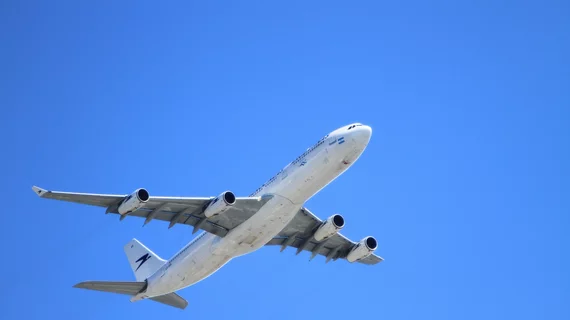Are physicians obligated to provide medical assistance on planes?
In an interview with JAMA, emergency medicine physician Rachel Zang, MD, discussed doctors responding to in-flight medical emergencies, potential legal liabilities and the standard equipment that airlines stock to handle such incidents.
She has even begun to always carry a supply of ondansetron—a drug to prevent nausea and vomiting—to help passengers who experience one of the most common in-flight medical conditions. Zang said syncope, respiratory distress, vomiting and chest pain are the most frequent problems flyers encounter, in that order.
“Being on a flight is the equivalent to being at 6,000 to 8,000 feet of altitude,” said Zang, a fourth-year resident at the Hospital of the University of Pennsylvania in Philadelphia. “At sea level, oxygen saturation in all of us healthy people is 99 to 100 percent, but when we go up into the air, most of us would be about 92 to 95 percent. So you can see how anyone who had underlying respiratory or cardiac issues, if their oxygen saturation drops lower, it's going to exacerbate angina or make their COPD (chronic obstructive pulmonary disease) or asthma worse.”
Zang pointed out that medical professionals who intervene in these cases in the U.S. are at no risk of legal liability “unless they were grossly negligent or had willful misconduct,” but the rules can get more complicated for international flights.
Still, many physicians may be hesitant to take charge for a variety of reasons, she said.
“You don't know why they're asking for a physician or if you're equipped to handle what they're asking for. Maybe you're really exhausted from a long trip. Maybe you had a beer with your dinner and you're not sure if you should step in.”
Read the full interview below:

